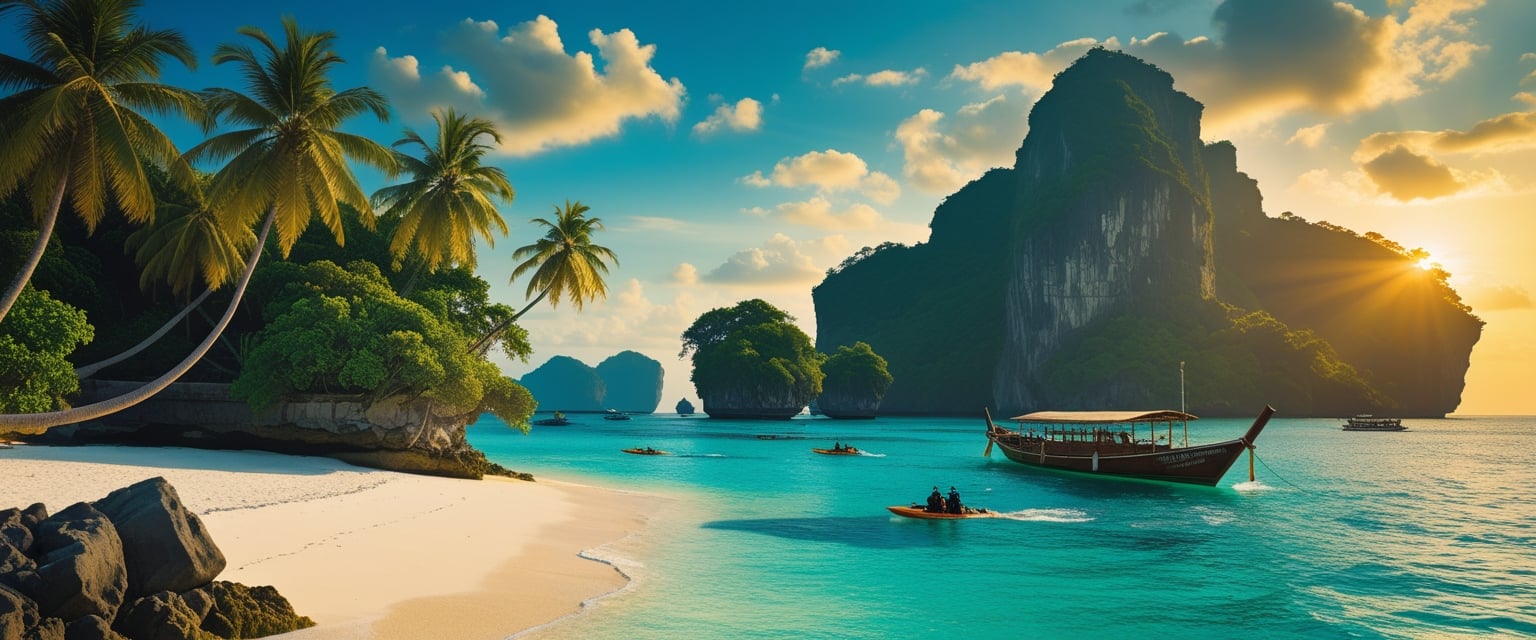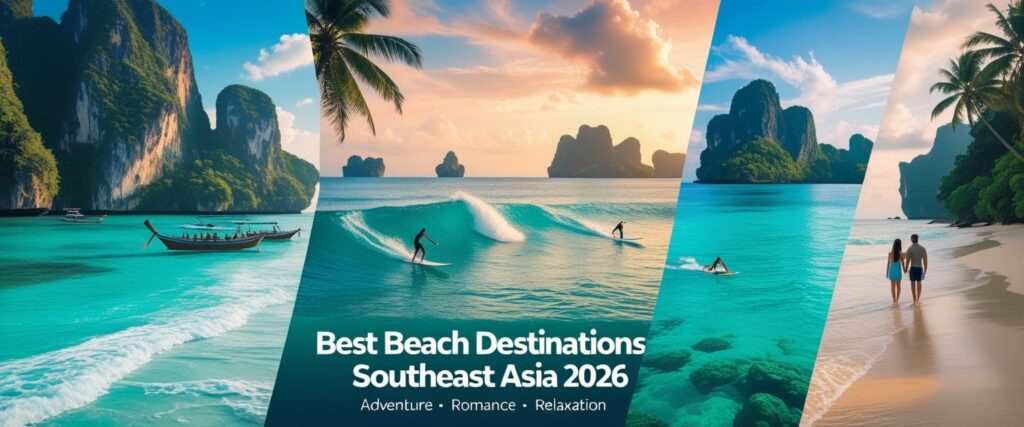Why Visit the Andaman and Nicobar Islands? These tropical gems of India promise travelers an extraordinary blend of pristine beaches, rich marine life, and fascinating history. Home to 572 breathtaking islands scattered like pearls across the Andaman Sea, this destination offers something for every kind of traveler. whether you’re drawn to underwater adventures, tranquil shores, or cultural heritage. From the world-famous Radhanagar Beach to the historic Cellular Jail, each island reveals a new story waiting to be discovered.

If you’ve ever wondered why visit the Andaman and Nicobar Islands, the answer lies in their perfect balance of adventure, relaxation, and natural beauty. Whether you’re diving into coral-filled waters, trekking through tropical forests, or simply soaking in the serenity of turquoise seas, these islands deliver an experience unlike anywhere else in India.
Table of Contents
Why Visit the Andaman and Nicobar Islands?
Deciding when to plan your Andaman and Nicobar Islands best time to visit can feel overwhelming when faced with a destination comprising 572 islands scattered like pearls in the Andaman Sea. Despite their remote location almost a thousand miles east of India’s mainland, these islands offer some of the most breathtaking experiences for travelers seeking both adventure and relaxation.
Why visit Andaman and Nicobar Islands? For starters, they boast some of the most beautiful beaches in India, including Radhanagar on Havelock Island, which has been voted the No. 1 beach in Asia. Additionally, the archipelago serves as a haven for marine life enthusiasts with world-class diving opportunities available year-round, though the main dive season runs from November to April. While December to March are the top months for warm, sunny weather and good transport links, we’ve found that even the monsoon season (June to August) offers unique experiences for the adventurous traveler.
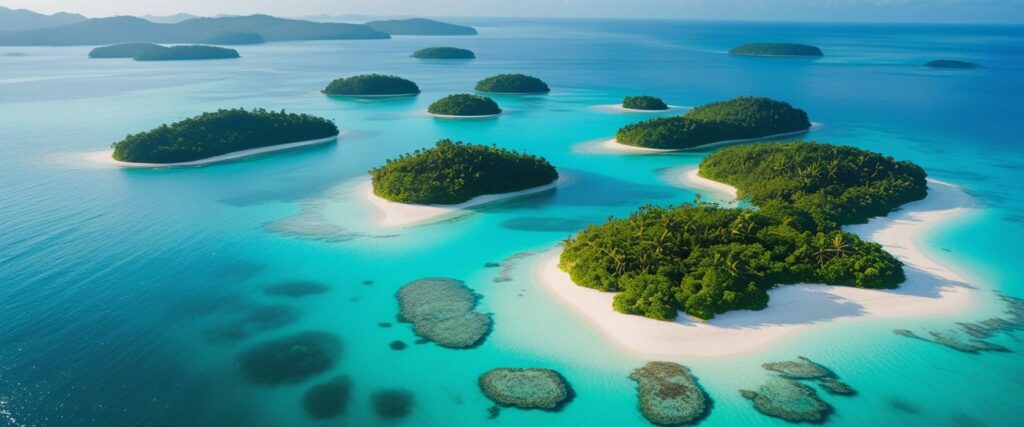
In this guide, I’ll walk you through everything you need to know about this tropical paradise, from its pristine beaches and underwater marvels to its rich colonial history—including the historic Cellular Jail built in 1906. Whether you’re a beach lover, diving enthusiast, history buff, or simply seeking an extraordinary destination off the beaten path, the Andaman Islands have something special waiting for you.
Pristine Beaches and Crystal Clear Waters
The Andaman archipelago boasts some of the most magnificent beaches in the world, each offering its own unique charm and experience.
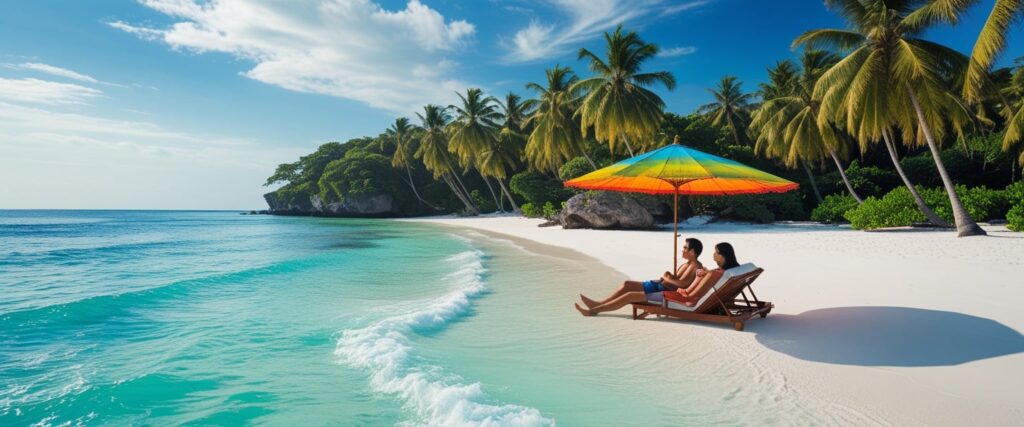
Radhanagar Beach: Asia’s Best Beach
Radhanagar Beach on Havelock Island stands as a true tropical paradise, ranked as the best beach in India and the 7th best beach in the world by TIME Magazine. This pristine stretch of white sand backed by lush forest has also earned the prestigious Blue Flag certification for its environmental sustainability and cleanliness standards. Furthermore, this beach consistently appears in TripAdvisor’s list of top 10 beaches in Asia, making it a must-visit destination for beach enthusiasts.
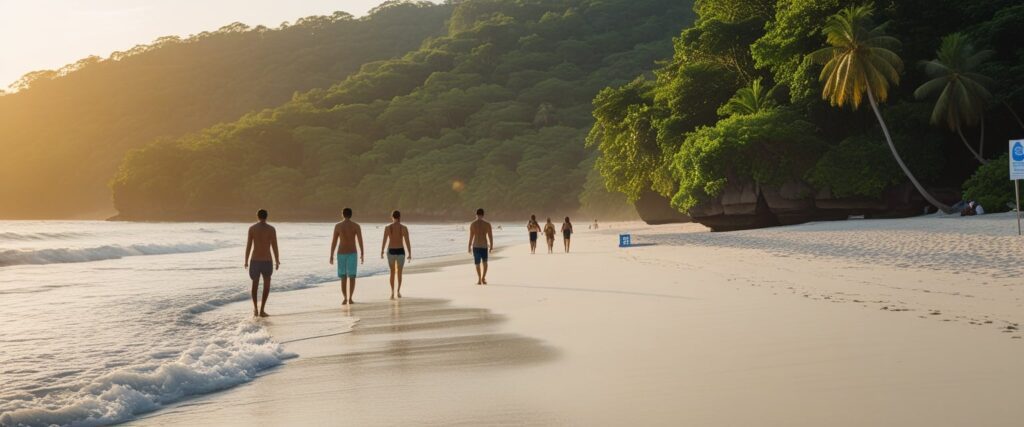
Elephant Beach: Perfect for Water Activities
Just a short distance from Radhanagar lies Elephant Beach, accessible either by a 20-minute boat ride or an adventurous 30-minute jungle trek. This hub of water sports offers snorkeling (₹1,500), parasailing (₹4,000), sea walking (₹3,500), and kayaking (₹3,500). For those who prefer staying dry, glass-bottom boat rides provide breathtaking views of the colorful coral reefs and marine life below.
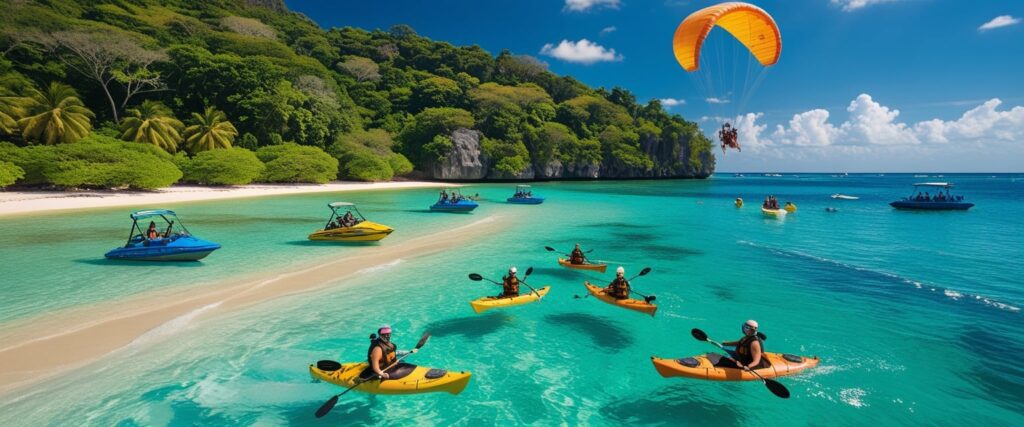
Kalapathar Beach: Sunrise Paradise
Kalapathar Beach, named for its distinctive black rocks (kala pathar means “black rock” in Hindi), offers a more serene experience. Renowned for its silvery sand and aqua-green waters, it’s considered the premier sunrise point on Havelock Island. Early risers should arrive before 5 AM to witness the magical golden glow of sunrise reflecting off the waters and black stones.
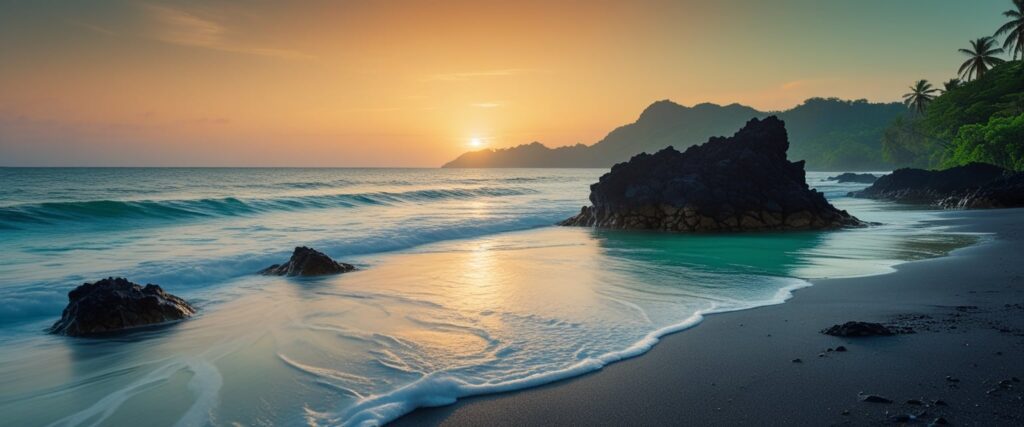
Neil Island’s Bharatpur Beach
Located just 500 meters from Neil Island Jetty, Bharatpur Beach features crystal-clear waters and vibrant coral reefs. Its unique characteristic is exceptionally shallow water extending about 300 meters into the sea, rarely rising above knee level. The beach is ideal for families, offering various water activities including glass-bottom boat rides.
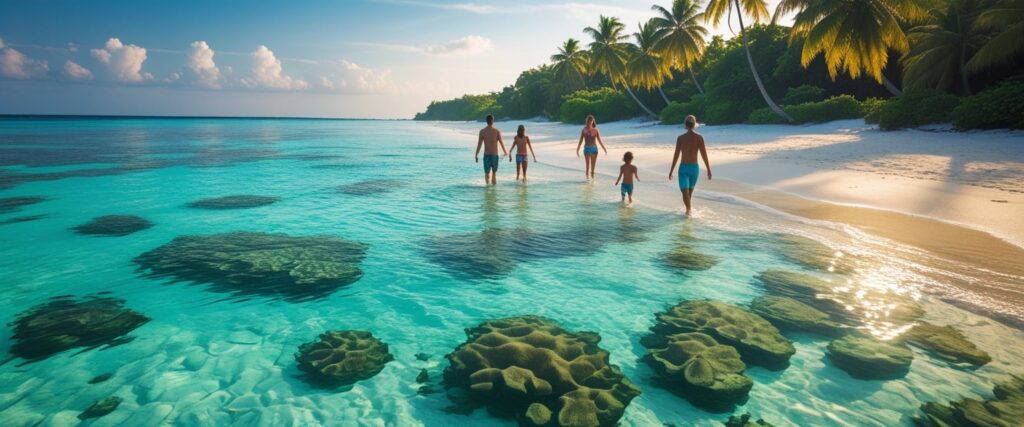
Corbyn’s Cove: Port Blair’s Beach Retreat
Situated only six kilometers from Port Blair, Corbyn’s Cove serves as the most accessible beach for visitors arriving in the Andamans. This coconut-palm fringed shoreline provides modern amenities including restaurants, changing rooms, and various water sports. History enthusiasts can also explore nearby Japanese Bunkers from World War II or arrange a boat trip to Snake Island for scuba diving adventures.
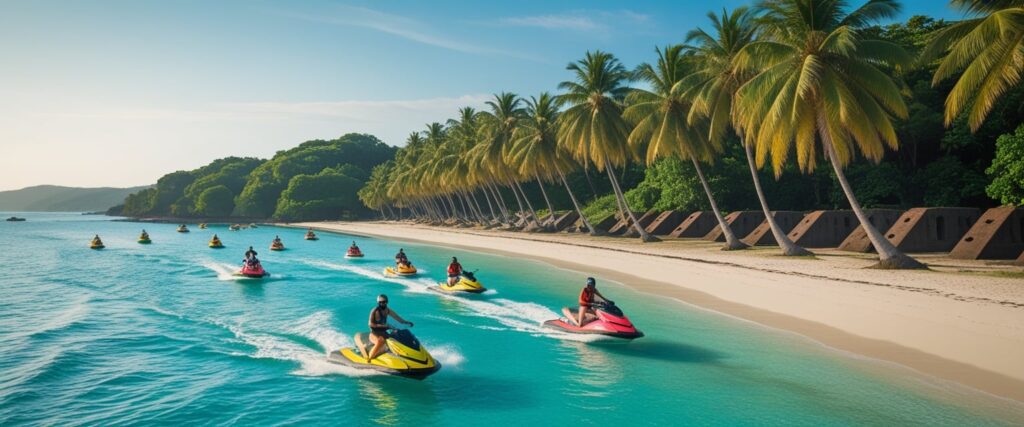
Underwater Paradise for Marine Enthusiasts
Beneath the azure waters surrounding the Andaman archipelago lies a mesmerizing underwater world that attracts marine enthusiasts from across the globe.
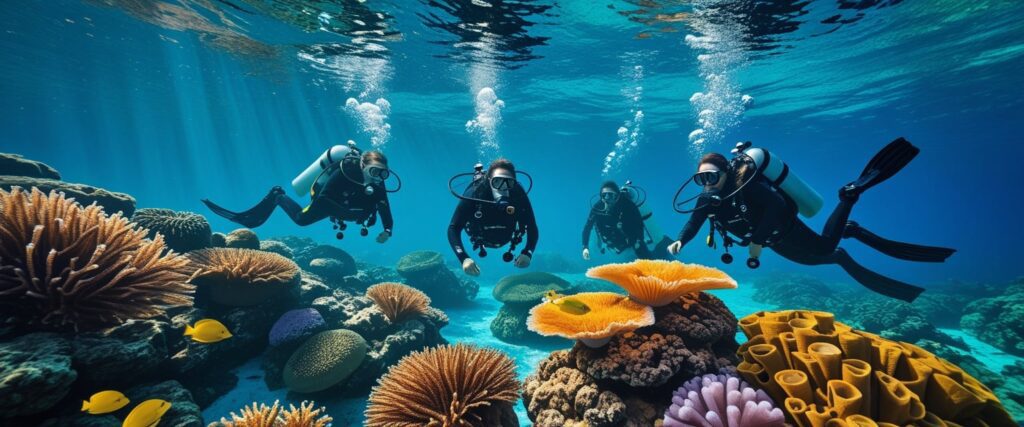
World-Class Scuba Diving Spots
Scuba diving in Andaman primarily centers around Havelock and Neil Islands, offering some of India’s best diving experiences. Experienced divers should not miss Dixon’s Pinnacle and Johnny’s Gorge—both world-class dive sites featuring massive underwater mounds adorned with gorgonians and multicolored soft corals. Moreover, the remote Barren Island, home to South Asia’s only active volcano, presents divers with extraordinary underwater lava formations and exceptionally clear visibility. For those seeking the extraordinary, Narcondam Island’s rocky ridges and steep slopes host massive barrel sponges and huge gorgonian fans.
Snorkeling in Coral Reefs
Snorkeling enthusiasts can explore numerous vibrant locations throughout the archipelago. Elephant Beach on Havelock Island stands out as one of the most pristine spots, featuring abundant marine life in crystal-clear waters. North Bay Island, often called the “Gateway to Coral Reefs,” allows visitors to witness colorful coral reefs teeming with oysters, pipefish, and clams. Notably, the archipelago’s reefs host 180 species of coral and countless multicolored fish.
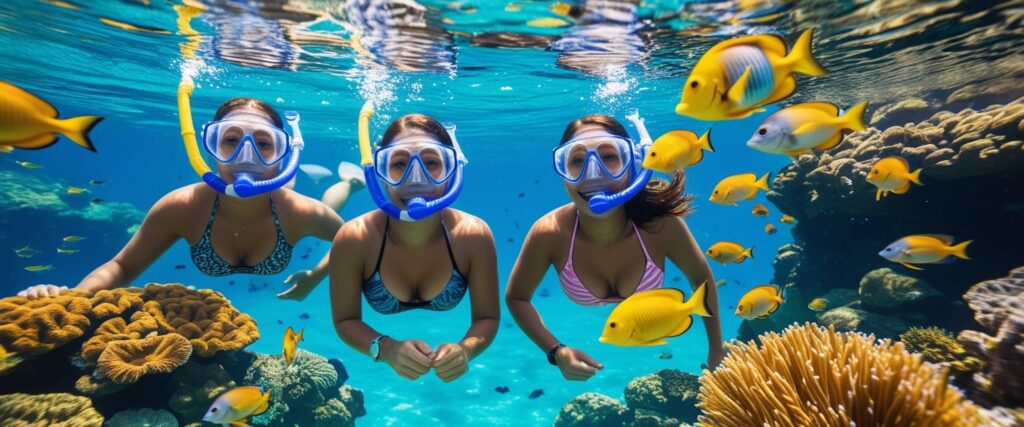
Sea Walking Experiences
Sea walking—an activity pioneered in India at the Andaman Islands—offers a unique opportunity to explore underwater without swimming skills. This extraordinary experience takes place 6-7 meters underwater at North Bay Island and Elephant Beach. During your walk on the ocean floor, you’ll be surrounded by schools of colorful fish while wearing a specially designed helmet that allows normal breathing.
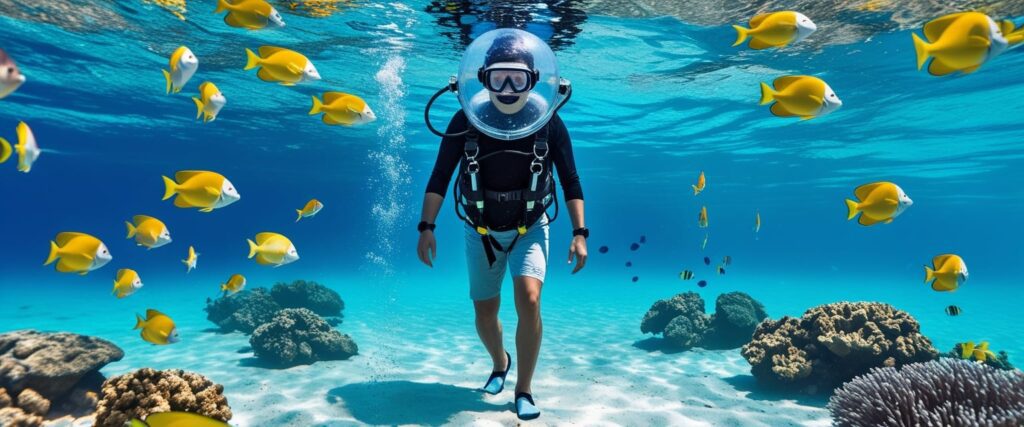
Marine Wildlife Encounters
The relative geographical isolation of the Andamans has fostered rich marine biodiversity, including endemic species. Underwater explorers regularly encounter manta rays, reef sharks, dugongs (the islands’ state animal), and nine species of reef sharks. In fact, during dives at sites like Johnny’s Gorge, you might spot white-tip reef sharks and various rays.
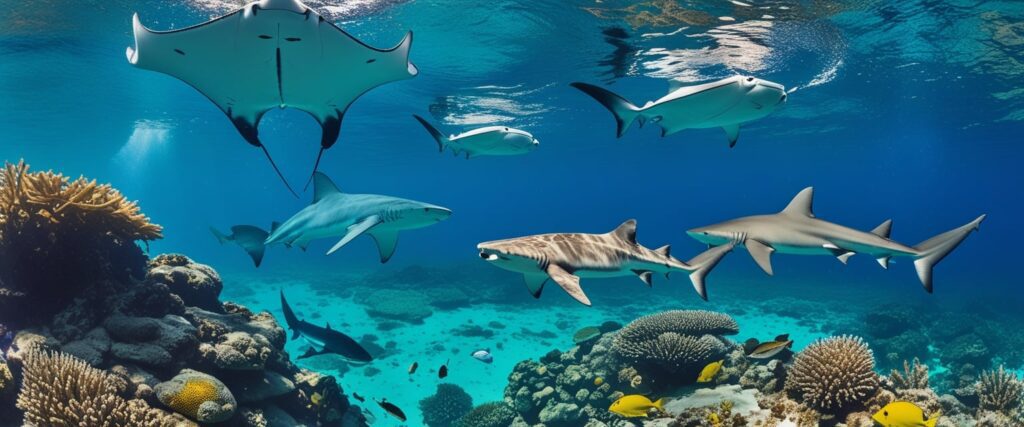
Best Diving Seasons and Conditions
The ideal time for underwater exploration spans from November to May, when water visibility is excellent and seas remain calm. Water temperatures during this period range between 26–29°C, creating perfect conditions for diving. Although diving continues year-round, the monsoon season (June-September) brings reduced visibility due to increased silt.
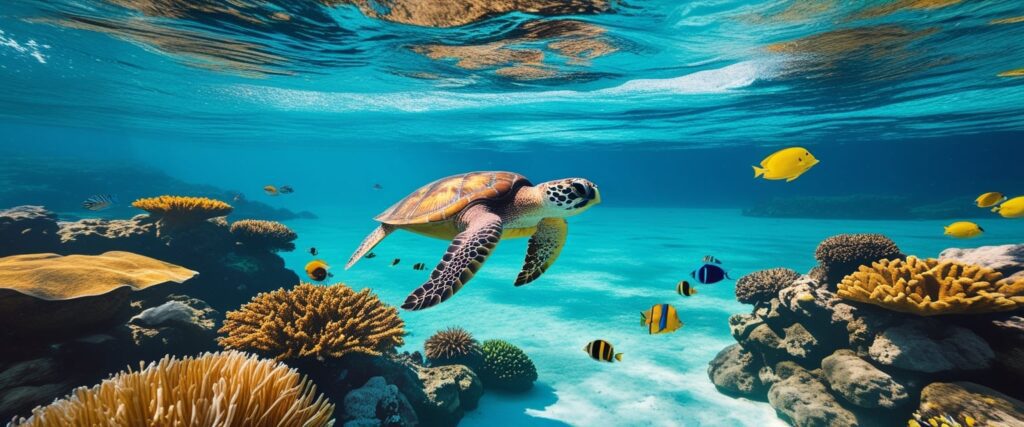
Rich Historical and Cultural Heritage
Beyond the stunning natural landscapes, the Andaman and Nicobar Islands harbor a fascinating historical tapestry that draws history enthusiasts year-round.
The Cellular Jail: A Symbol of Freedom Struggle
Known locally as “Kālā Pānī” (Black Water), the Cellular Jail in Port Blair stands as a powerful reminder of India’s struggle for independence. Built between 1896 and 1906, this colonial prison originally featured seven wings in a star-shaped pattern designed for solitary confinement. Many notable freedom fighters endured brutal conditions here, including forced labor, starvation diets, and torture. Following protests by Mahatma Gandhi and Rabindranath Tagore, the colonial government closed the facility in 1939. Currently, only three wings remain intact after earthquake damage and subsequent demolitions.
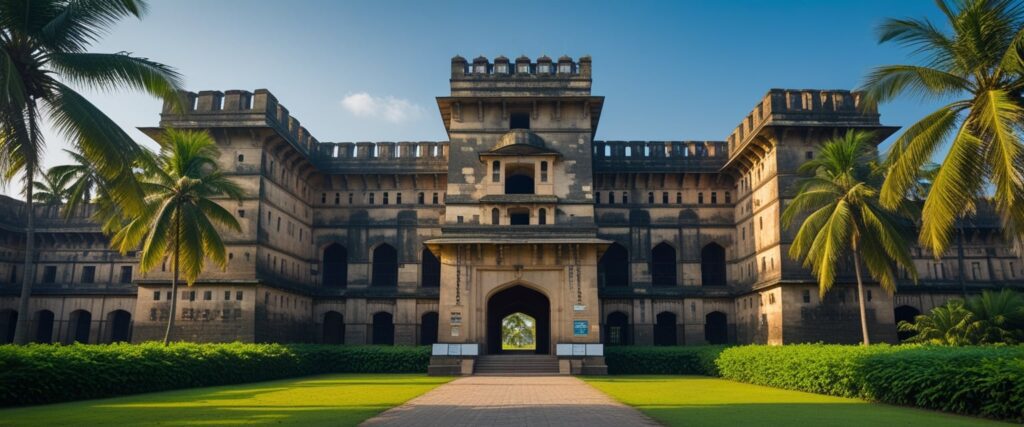
Ross Island’s Colonial Past
Previously serving as the administrative headquarters for the entire archipelago from 1858 until 1941, Ross Island presents a glimpse into colonial life. Often called the “Paris of the East,” this self-sustained township once boasted luxurious amenities including a church with stained glass from Italy, swimming pools, and tennis courts. Japanese forces occupied the island during World War II, constructing bunkers and tunnels still visible today. Subsequently, nature has reclaimed the abandoned structures, creating a hauntingly beautiful landscape.
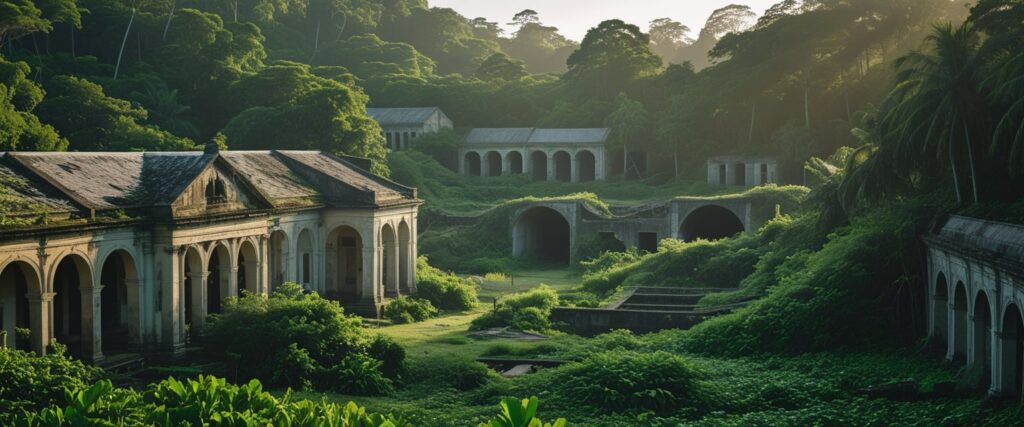
Indigenous Tribal Communities
The islands remain home to several indigenous groups, each with distinct cultures. These include the Great Andamanese (now only 43 people), Onges (96), Jarawas (240), and the isolated Sentinelese (estimated 100-150). The Nicobarese and Shompens, predominantly Mongoloid tribes from the Nicobar Islands, practice fishing and agriculture. Historically, these populations have faced significant challenges—the Great Andamanese declined from 4,800 in 1858 to merely 28 by 1988 due to diseases and displacement.
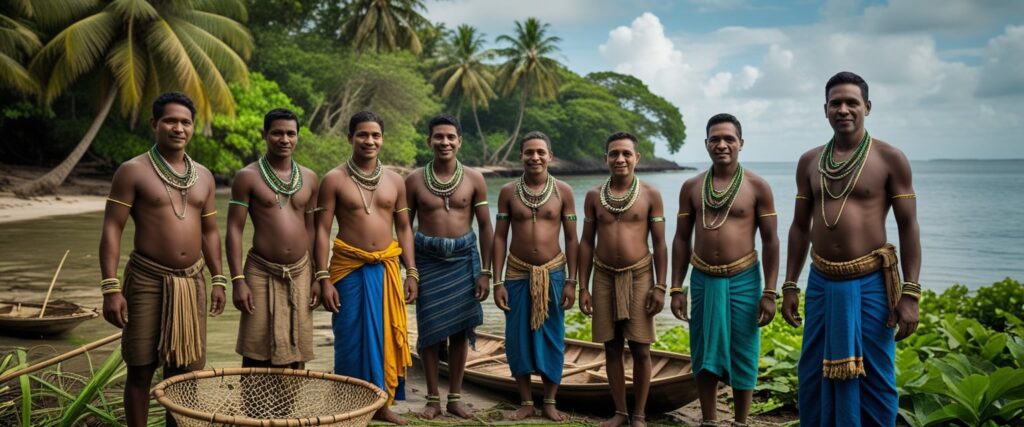
Anthropological Museum Insights
Established in 1975, the Zonal Anthropological Museum in Port Blair offers visitors rare glimpses into tribal life. Key exhibits include Jarawa chest guards with geometric patterns, shamanic sculptures, and artifacts demonstrating tribal craftsmanship. The museum houses a substantial library containing literature about these unique communities.
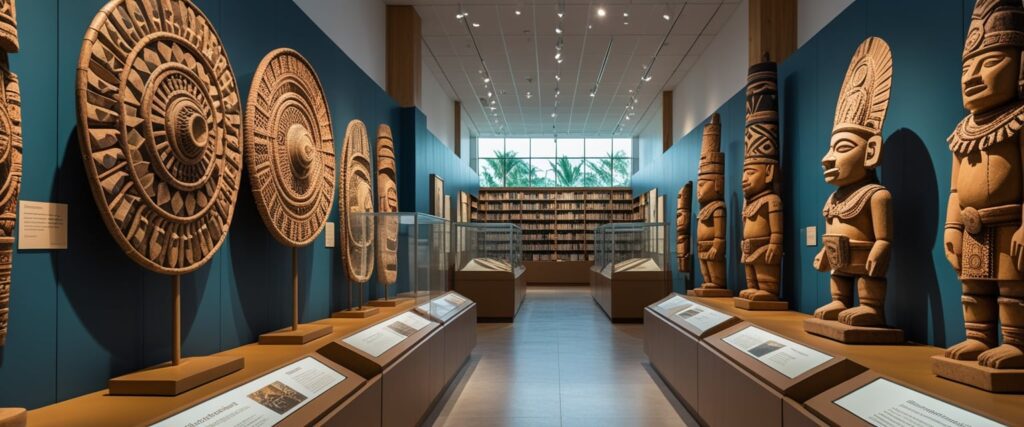
Cultural Diversity of the Islands
The islands’ cultural mosaic reflects influences from indigenous tribes and settlers across generations. Annual celebrations include the Island Tourism Festival (January), Subhash Mela commemorating Netaji Subhash Chandra Bose’s visit, and various tribal festivities. Cuisine primarily features seafood alongside traditional dishes influenced by Hindu, Christian, and other religious communities.
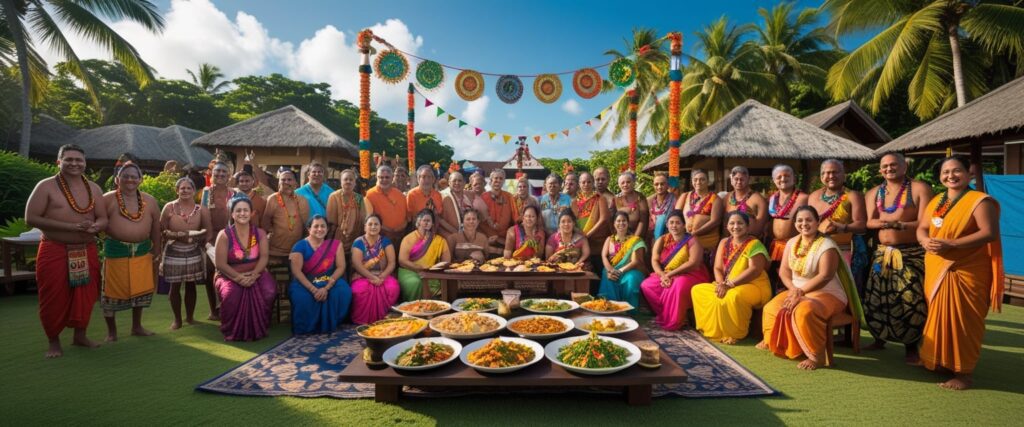
Adventure and Relaxation Opportunities
The Andaman and Nicobar Islands offer a perfect blend of thrill-seeking activities and peaceful retreats that cater to every traveler’s desires.
Island Hopping Adventures
Exploring multiple islands remains one of the archipelago’s signature experiences. Havelock Island serves as the most popular starting point, with its world-famous Radhanagar Beach and abundant marine life. For a luxurious experience, consider boarding from Port Blair’s Symphony Samudra Beachside Jungle Resort before venturing to Neil Island’s tranquil shores. Particularly adventurous travelers should visit Baratang Island’s limestone caves and mud volcanoes, plus the stunning twin islands of Ross and Smith connected by a natural sandbar.
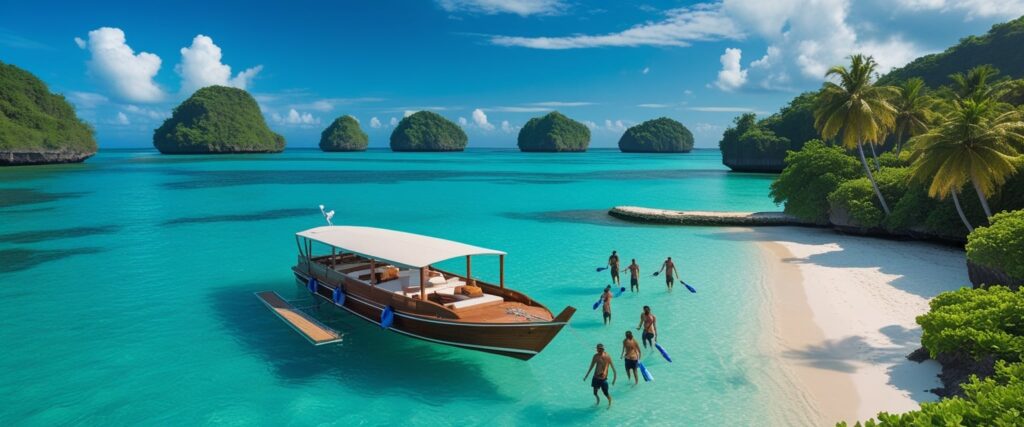
Trekking Through Tropical Rainforests
Beyond beaches, the islands’ lush interiors beckon with numerous hiking opportunities. The trek to Elephant Beach spans approximately 1.8 km through dense tropical forests and takes about 30–45 minutes. For experienced hikers, Mount Harriet to Madhuban offers encounters with unique wildlife, especially exotic birds and butterflies. Meanwhile, the challenging 8 km trek to Saddle Peak—standing at 732 meters as the archipelago’s highest point—rewards with panoramic views of the coastline.
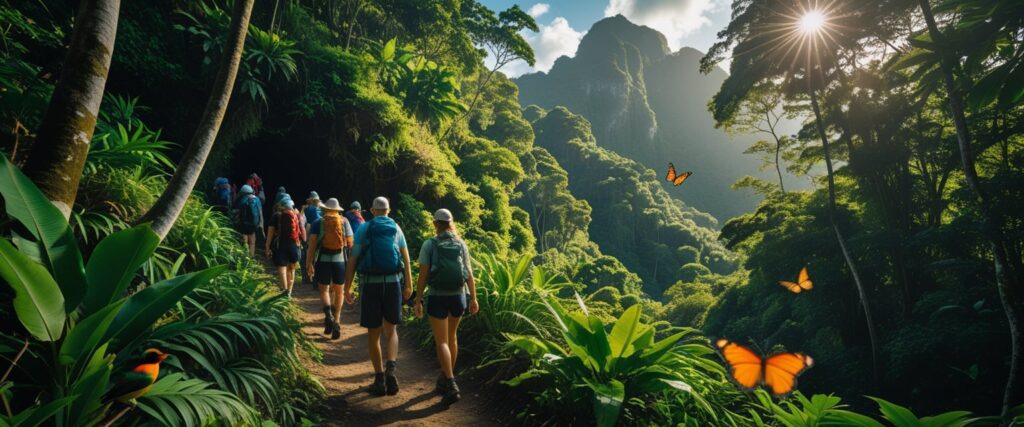
Luxury Resorts and Eco-Retreats
After active exploration, indulge at one of many world-class accommodations. Taj Exotica Resort & Spa sprawls across 46.5 acres of beachfront property on Havelock Island, featuring an infinity swimming pool and wellness center powered by solar energy. Many resorts emphasize sustainability—Tilar Siro’s fitness center was built around a large mahua tree, while others offer rooms constructed from plantation timber without cutting surrounding trees.
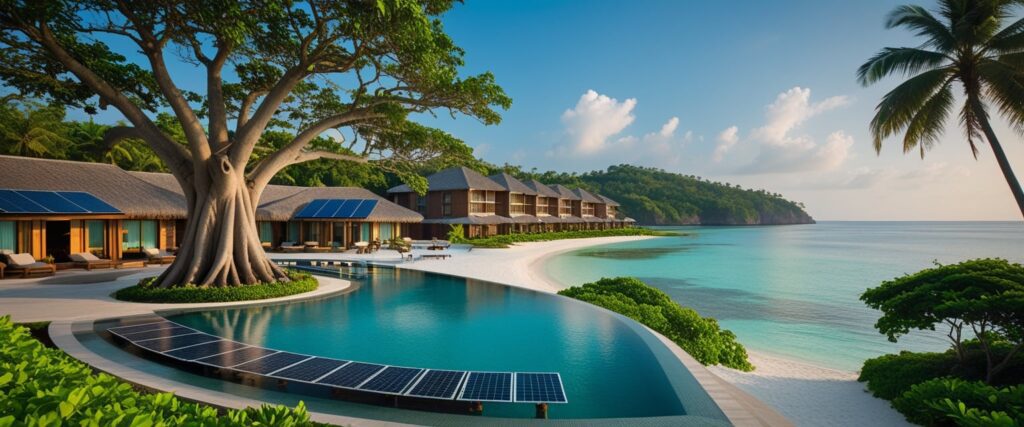
Local Cuisine and Seafood Delights
Fresh catches dominate island menus at establishments like New Lighthouse Restaurant, renowned for tandoori fish and crab. Must-try dishes include fish curry in coconut milk, grilled lobster (₹600-₹2,500), and butter garlic crab. For something unique, sample cuttlefish fry (₹300-₹500)—chopped rings marinated in spicy batter and deep-fried until crispy.

Best Times to Visit for Different Experiences
Plan your visit between October and May for optimal weather conditions perfect for water activities. The summer months (with temperatures ranging from 25°C to 32°C) showcase the islands in full glory—pristine beaches with hammocks and clear turquoise waters. For wildlife enthusiasts, December through April offers the best opportunities to spot indigenous species.
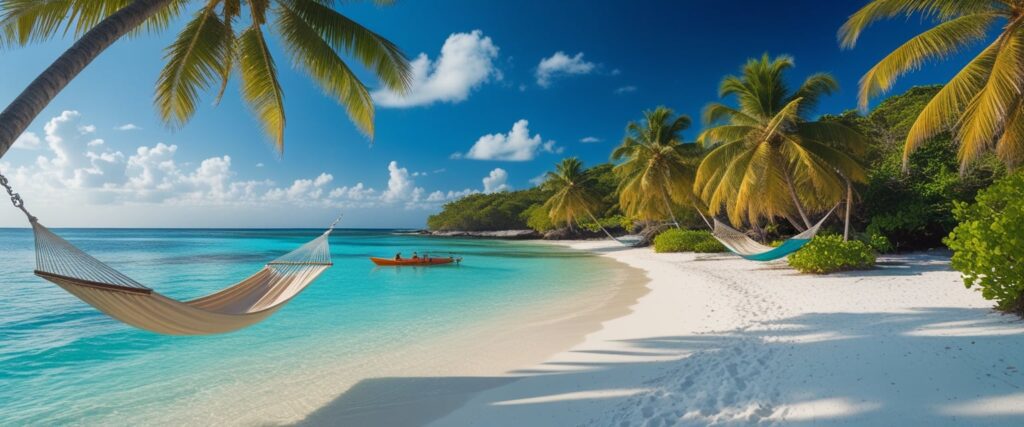
Conclusion
The Andaman and Nicobar Islands truly stand as one of India’s most remarkable natural treasures. Throughout this guide, we’ve explored the pristine beaches like Radhanagar and Elephant Beach, where crystal-clear waters and white sands create picture-perfect landscapes. Additionally, the underwater world offers extraordinary experiences for divers and snorkelers alike, with vibrant coral reefs and diverse marine life making every plunge memorable.
Beyond the natural beauty, the islands carry significant historical weight through sites like the Cellular Jail and Ross Island, telling powerful stories of India’s freedom struggle and colonial past. Whether you seek adventure through island hopping and rainforest treks or prefer relaxation at luxury resorts while sampling delicious seafood, these islands cater to all travel preferences.
The best time to visit depends on your specific interests, though December to March provides optimal weather conditions for most activities. Despite their remote location, the effort to reach these islands rewards travelers with experiences unlike anywhere else in India.
Before planning your journey, remember that some areas remain restricted to protect indigenous communities and fragile ecosystems. This respectful approach to tourism has certainly helped preserve the islands’ natural charm and cultural significance.
After experiencing the Andamans firsthand, I can confidently say these islands offer much more than just beautiful beaches. They provide a perfect blend of adventure, history, culture, and relaxation that will leave you with unforgettable memories. The Andaman and Nicobar Islands might seem far from the mainland, but they’re absolutely worth every mile of the journey.
Key Takeaways
The Andaman and Nicobar Islands offer an unparalleled tropical paradise combining pristine beaches, rich marine life, fascinating history, and diverse adventures that make them worth the journey from mainland India.
• World-class beaches await: Radhanagar Beach ranks as Asia’s best, while Elephant Beach offers premier water sports and Kalapathar provides stunning sunrise views.
• Underwater paradise beckons: Experience exceptional scuba diving at Dixon’s Pinnacle, snorkel vibrant coral reefs, or try unique sea walking adventures 6-7 meters underwater.
• History comes alive: Explore the iconic Cellular Jail where freedom fighters were imprisoned and discover colonial remnants on Ross Island.
• Adventure meets relaxation: Island hop between 572 islands, trek through tropical rainforests, stay at luxury eco-resorts, and savor fresh seafood delicacies.
• Perfect timing matters: Visit December to March for optimal weather and water activities, though diving remains excellent November through May.
Whether you’re seeking pristine beaches, underwater adventures, historical insights, or simply an escape from the ordinary, these remote islands deliver experiences that justify their reputation as one of India’s most extraordinary destinations.
FAQs
Q1. What is the best time to visit the Andaman and Nicobar Islands? The best time to visit is from December to March when the weather is warm and sunny, perfect for beach activities and water sports. However, if you’re interested in diving, the season extends from November to May for excellent visibility.
Q2. Are there any restrictions for visiting the Andaman and Nicobar Islands? Yes, there are some restrictions. Certain areas are off-limits to protect indigenous communities and fragile ecosystems. It’s important to respect these restrictions and check the latest travel guidelines before planning your trip.
Q3. What are some must-visit beaches in the Andaman Islands? Some of the most beautiful beaches include Radhanagar Beach on Havelock Island, known as Asia’s best beach, Elephant Beach for water activities, and Kalapathar Beach for stunning sunrises. Bharatpur Beach on Neil Island and Corbyn’s Cove near Port Blair are also worth visiting.
Q4. What underwater activities can I experience in the Andamans? The Andamans offer world-class scuba diving, especially around Havelock and Neil Islands. You can also enjoy snorkeling in vibrant coral reefs, try sea walking at North Bay Island or Elephant Beach, and spot diverse marine life including manta rays and reef sharks.
Q5. Are there any historical sites to explore in the Andaman Islands? Yes, the Cellular Jail in Port Blair is a significant historical site, symbolizing India’s struggle for independence. Ross Island, with its colonial-era ruins, offers a glimpse into the archipelago’s past. The Anthropological Museum in Port Blair provides insights into the islands’ indigenous cultures.
